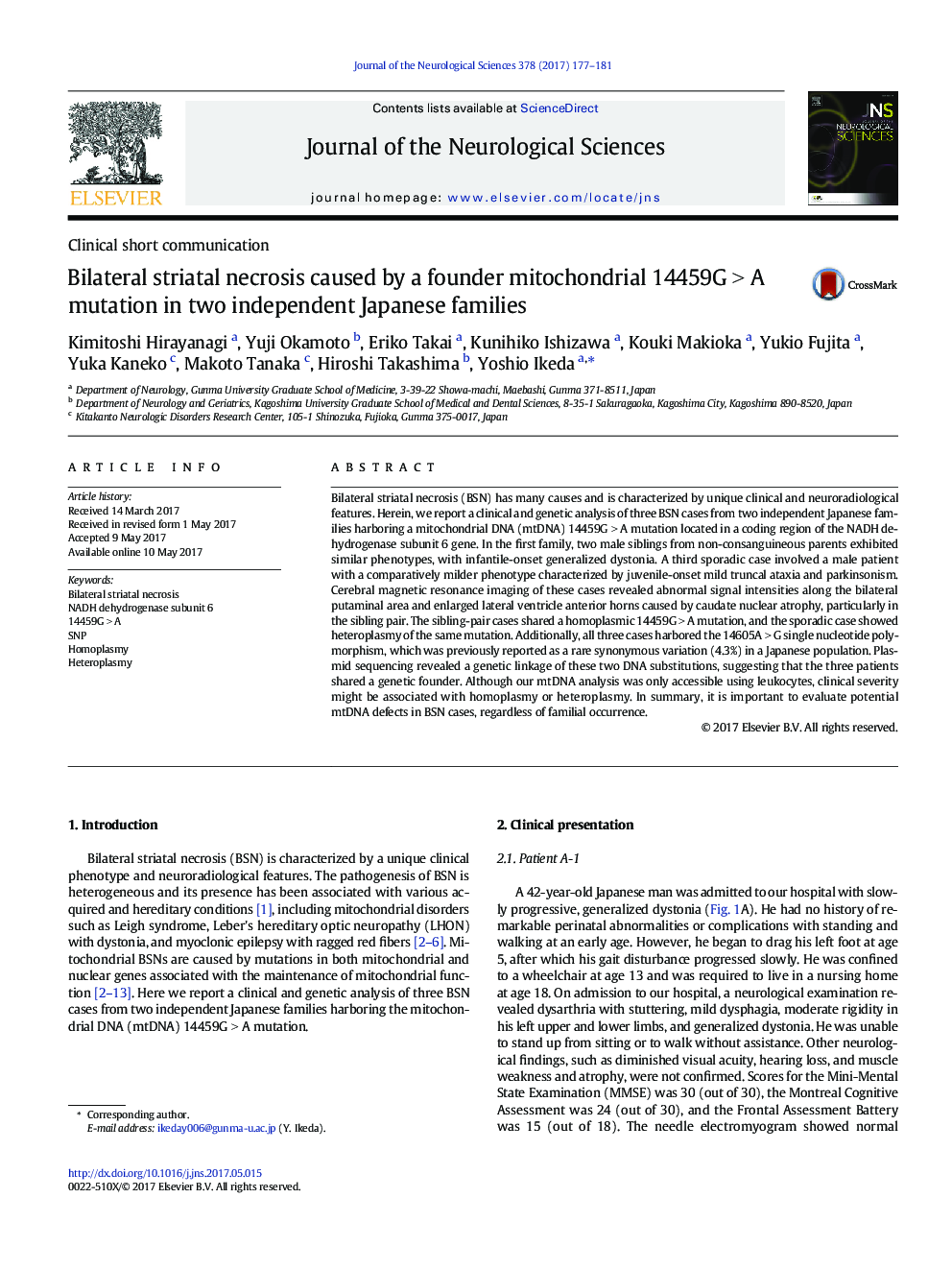| Article ID | Journal | Published Year | Pages | File Type |
|---|---|---|---|---|
| 5502850 | Journal of the Neurological Sciences | 2017 | 5 Pages |
Abstract
Bilateral striatal necrosis (BSN) has many causes and is characterized by unique clinical and neuroradiological features. Herein, we report a clinical and genetic analysis of three BSN cases from two independent Japanese families harboring a mitochondrial DNA (mtDNA) 14459GÂ >Â A mutation located in a coding region of the NADH dehydrogenase subunit 6 gene. In the first family, two male siblings from non-consanguineous parents exhibited similar phenotypes, with infantile-onset generalized dystonia. A third sporadic case involved a male patient with a comparatively milder phenotype characterized by juvenile-onset mild truncal ataxia and parkinsonism. Cerebral magnetic resonance imaging of these cases revealed abnormal signal intensities along the bilateral putaminal area and enlarged lateral ventricle anterior horns caused by caudate nuclear atrophy, particularly in the sibling pair. The sibling-pair cases shared a homoplasmic 14459GÂ >Â A mutation, and the sporadic case showed heteroplasmy of the same mutation. Additionally, all three cases harbored the 14605AÂ >Â G single nucleotide polymorphism, which was previously reported as a rare synonymous variation (4.3%) in a Japanese population. Plasmid sequencing revealed a genetic linkage of these two DNA substitutions, suggesting that the three patients shared a genetic founder. Although our mtDNA analysis was only accessible using leukocytes, clinical severity might be associated with homoplasmy or heteroplasmy. In summary, it is important to evaluate potential mtDNA defects in BSN cases, regardless of familial occurrence.
Related Topics
Life Sciences
Biochemistry, Genetics and Molecular Biology
Ageing
Authors
Kimitoshi Hirayanagi, Yuji Okamoto, Eriko Takai, Kunihiko Ishizawa, Kouki Makioka, Yukio Fujita, Yuka Kaneko, Makoto Tanaka, Hiroshi Takashima, Yoshio Ikeda,
